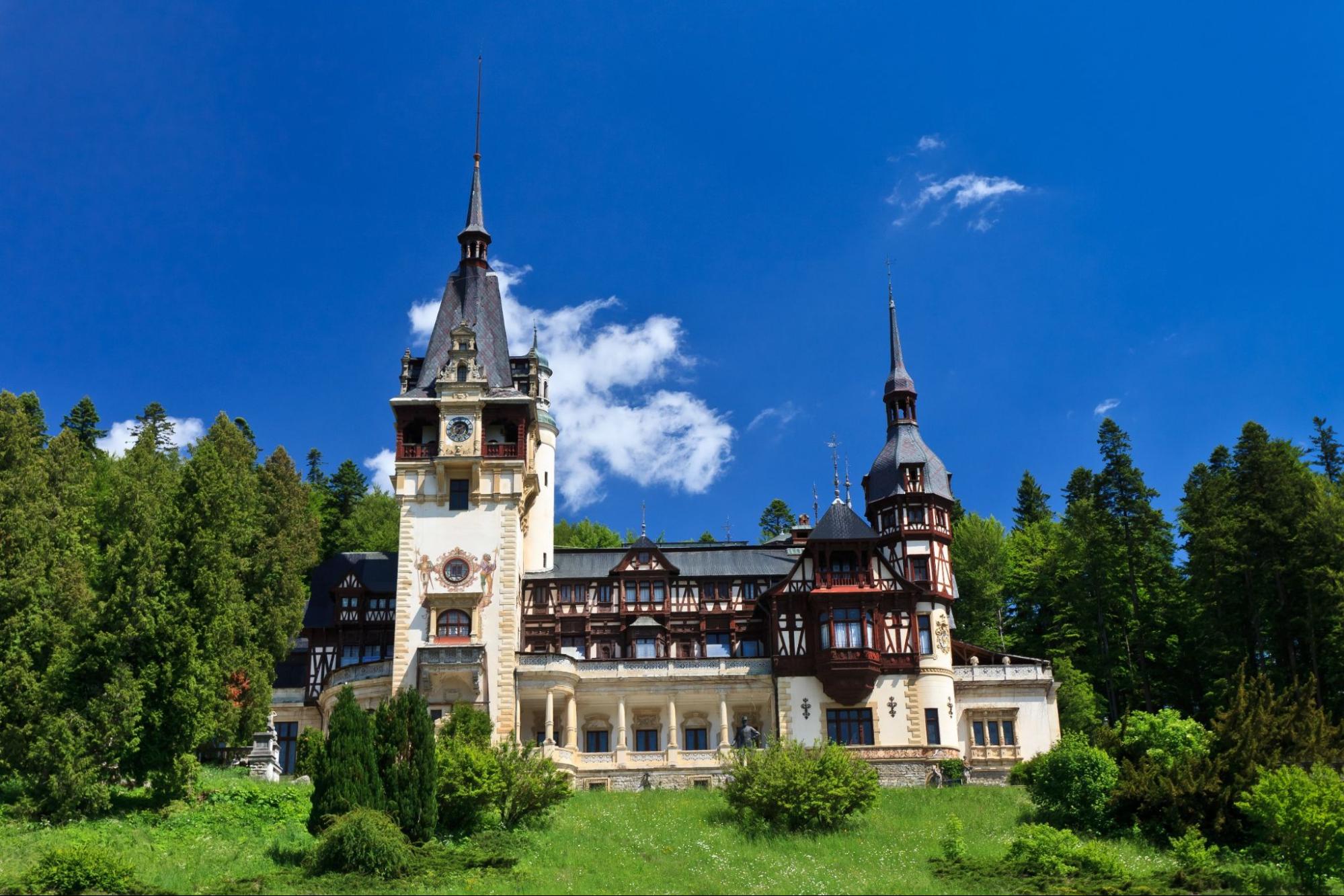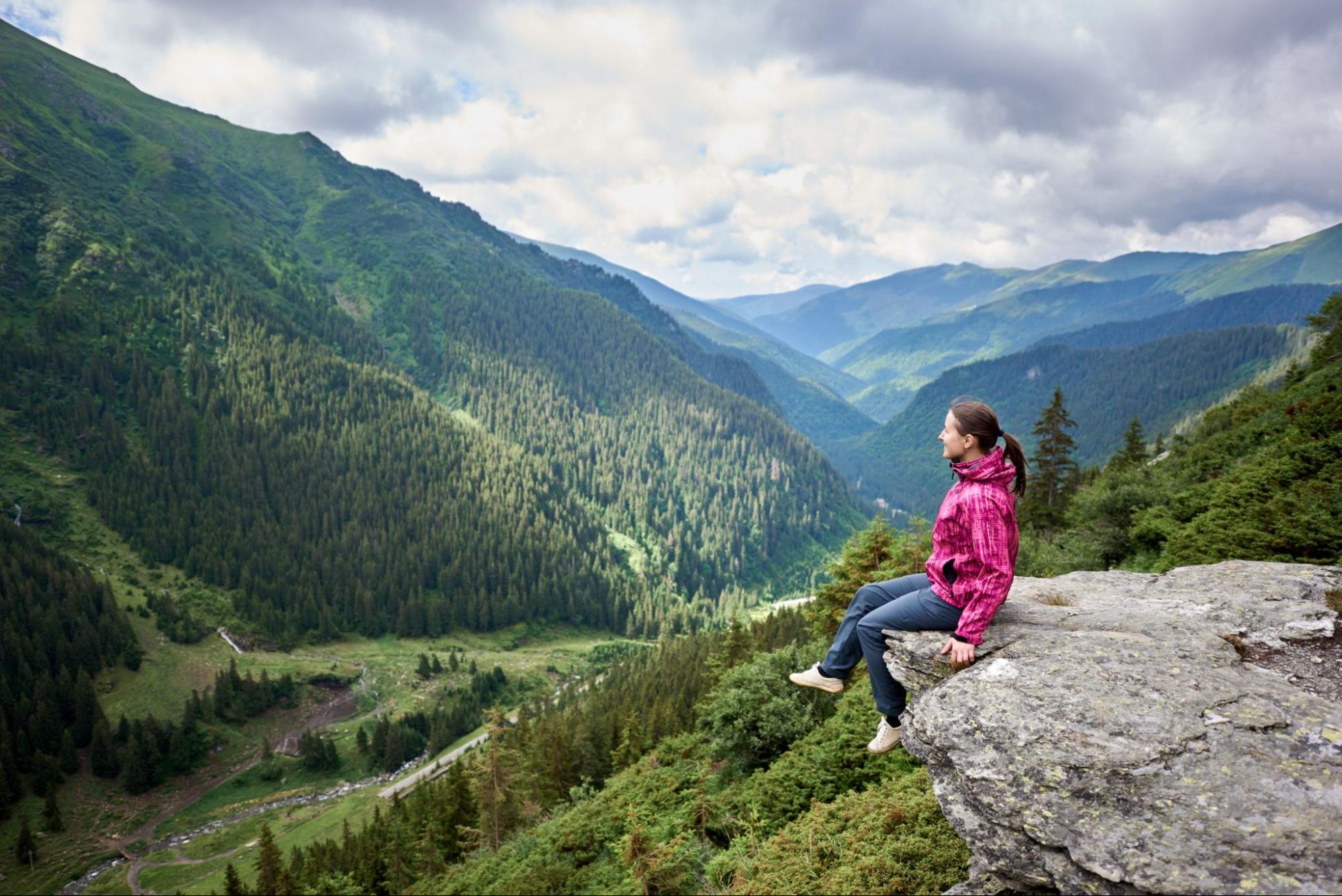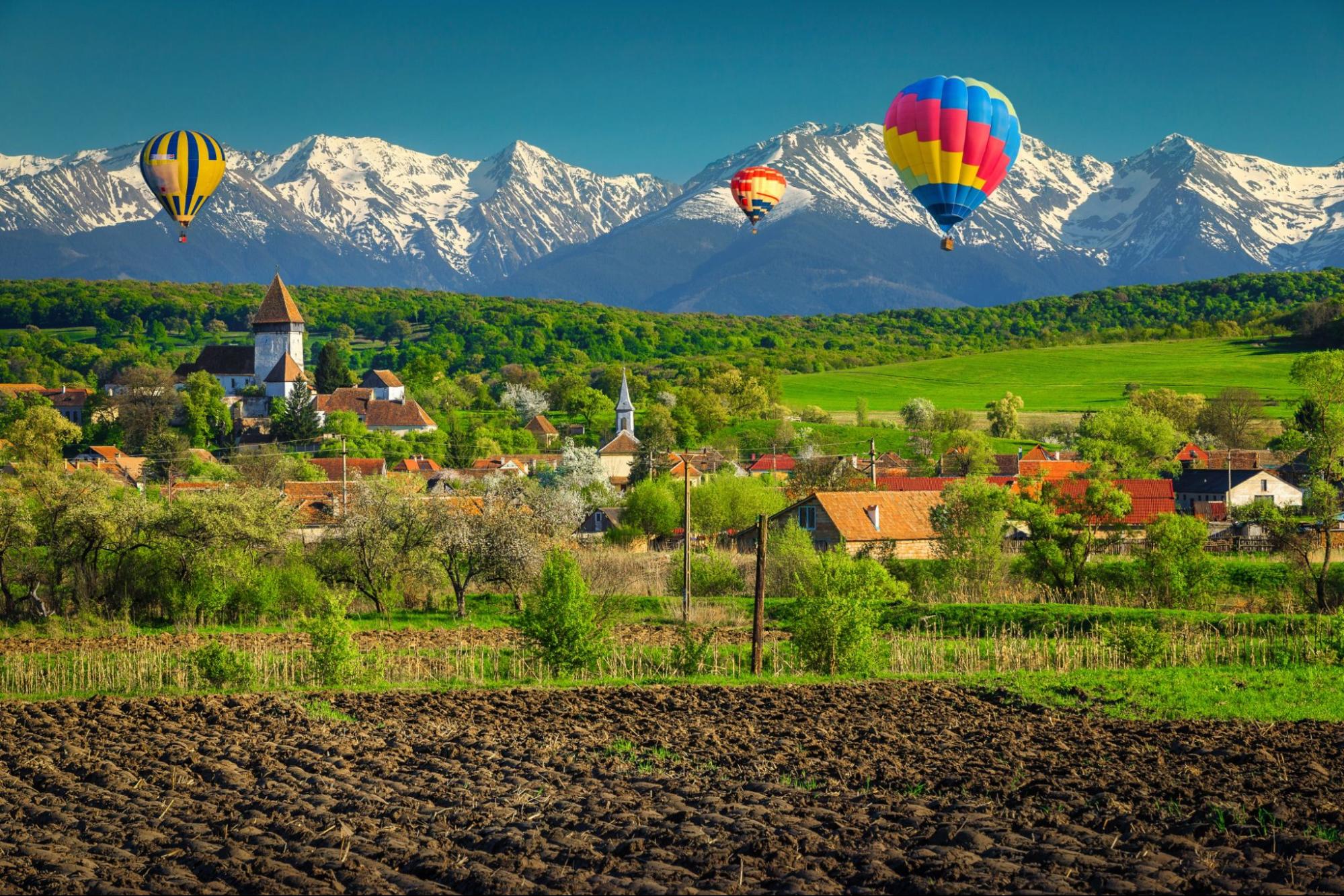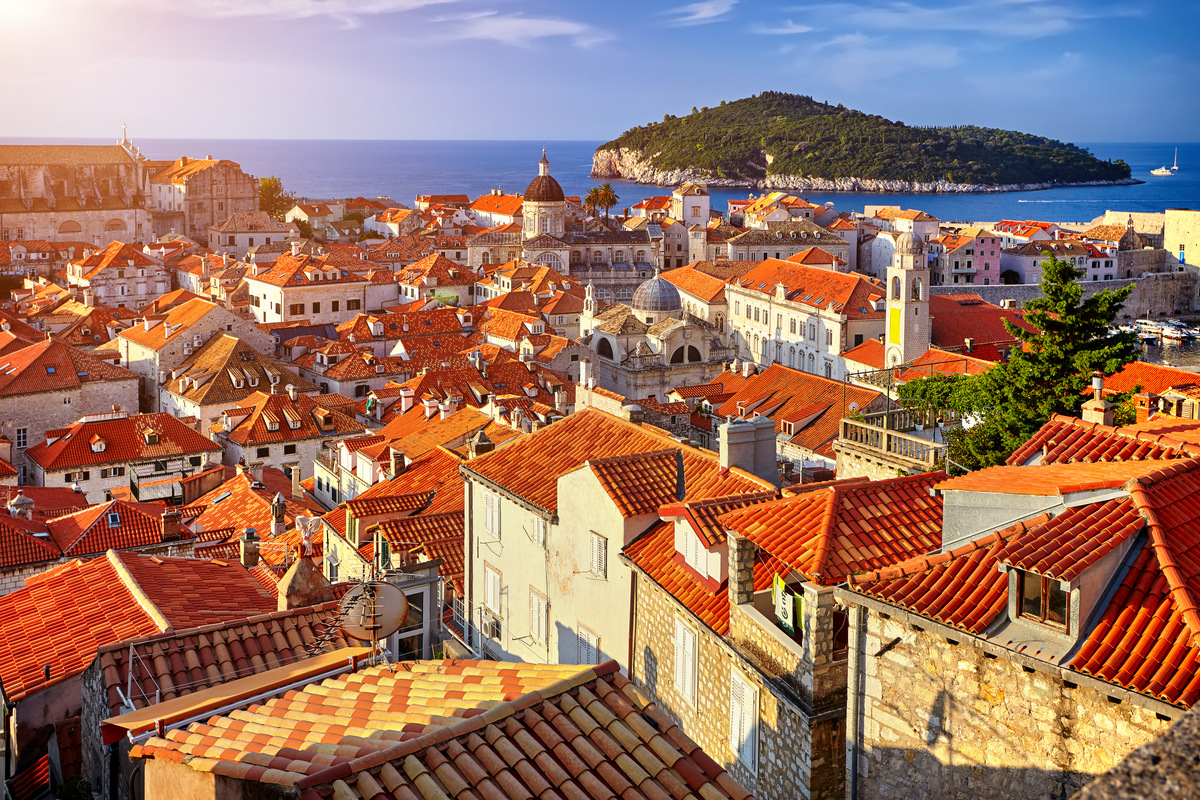Best Time to be in Romania
Romania, often referred to as the "Land of Dracula," is a hidden gem in Eastern Europe that offers visitors a unique blend of rich history, stunning natural landscapes, and a vibrant cultural scene.

To make the most of your visit, it's essential to choose the right time to explore this diverse and captivating country. In this comprehensive guide, we'll delve into the best times to visit Romania, along with important considerations for each season.
Why Visit Romania?
Before we explore the seasons, let's first understand what makes Romania a must-visit destination:

- Rich History: Romania boasts a wealth of historical sites, including medieval castles, fortresses, and the legendary Bran Castle, often associated with the Dracula legend.
- Cultural Diversity: Romania's cuisine is a delightful mix of hearty stews, sweet pastries, and traditional dishes like mămăligă (cornmeal porridge) and sarmale (cabbage rolls). Don't forget to try the local wines, particularly in regions like Transylvania.
- Natural Beauty: For outdoor enthusiasts, Romania offers an array of options, from the majestic Carpathian Mountains to the unique Danube Delta and the picturesque Black Sea Coast.
- Off the Beaten Path: Romania provides a less touristy experience compared to some other European destinations, making it perfect for those seeking an authentic and unique adventure.
Now that you're excited about visiting Romania let's explore the best times to do so.
Traveling in Romania between January and March
Winter Months: January to March
- Romania experiences its coldest months during this period, with temperatures dropping as low as -5°C inland.
- Transylvania becomes a winter wonderland with heavy snowfall, creating a picturesque but frigid landscape.
- Winter festivals like the Brasov Winter Festival and the Sibiu Christmas Market offer cultural experiences and a taste of Romanian holiday traditions.
- Traveling during this time can be more budget-friendly, as accommodations and attractions often offer lower rates.
Considerations:
- Freezing temperatures can make travel challenging, so be prepared for icy roads and sidewalks.
- Some hiking trails and natural attractions may be closed or difficult to access due to snow and ice.
- Be ready for potential travel disruptions, including delays and cancellations.
Traveling in Romania in April and May
Spring Months: April and May
- Spring is arguably the best time to visit Romania. The countryside bursts into color with blooming flowers and green landscapes.
- Temperatures rise steadily from March onwards, making sightseeing highly enjoyable.
- Occasional rainfall is possible, so packing for wet weather is advisable.
- The country comes alive with various cultural events and festivals like the Bucharest International Jazz Festival and the Sibiu International Theatre Festival.
Considerations:
- Be prepared for sudden temperature changes and occasional rain, so bring layers and rain gear.
- Some hiking trails and natural attractions may still be closed or challenging to access.
- While there are fewer crowds compared to summer, popular tourist destinations may still be busy.
Traveling in Romania between June and August
Summer Months: June to August
- Summer in Romania sees warm temperatures ranging from the high 20s to 30°C.
- This is the busiest time, with cultural festivals and events in full swing, including Plovdiv.
- Longer daylight hours provide more time for exploration, and the country's nightlife comes alive.
- Fresh fruits and vegetables are abundant, enhancing the local cuisine.
Considerations:
- While the warm weather is a perk, it can also be hot and humid, so prepare for high temperatures.
- Increased tourism can lead to crowded roads, and popular accommodations and activities may have limited availability, so plan ahead.
Traveling in Romania in September and October
Autumn Months: September and October
- Temperatures drop to a comfortable average of 25°C, creating ideal conditions for both cultural tours and outdoor activities.
- Romania's forests and countryside exhibit beautiful fall foliage, with leaves changing color and creating a stunning landscape.
- Harvest season offers fresh produce, such as grapes, apples, and pumpkins, at local markets and festivals.
- Cultural events and festivals abound during this season, including the Transilvania International Film Festival, the Bucharest Jazz Festival, and the Sibiu International Theatre Festival.
Considerations:
- Some natural attractions, hiking trails, and parks may be closed during the autumn months due to weather conditions or maintenance work.
- In smaller towns and villages, public transportation may have reduced schedules during the off-season, so plan accordingly.
Traveling in Romania in November and December
Late Autumn and Early Winter Months: November and December
- November and December bring colder temperatures, ranging from 0 to 10°C.
- Romania is known for its traditional Christmas markets and festive atmosphere during the holiday season.
- Visitors can enjoy hot mulled wine, traditional food, and local handicrafts while soaking up the holiday spirit.
- Romania celebrates several holidays and festivals during the winter months, including St. Andrew's Day, St. Nicholas Day, and Christmas.
Considerations:
- In rural areas, public transportation schedules may be reduced or unreliable due to winter weather conditions.
- Major cities, such as Bucharest and Cluj-Napoca, can become crowded during the holiday season due to Christmas markets and events.
- Sightseeing and cultural activities may be limited due to gloomy weather, so plan to focus on seasonal festivities.
Romania Climate & Weather Guide

Table in Reference
Trips to Transylvania in Spring and Fall

Spring: April to June
Spring and fall are considered the best seasons to visit Transylvania, a region known for its cinematic castles, charming small towns, and rich culture.
Why Visit Transylvania in Spring:
- The warm and sunny days provide the perfect conditions for exploring attractions like Peles Castle and Bran Castle.
- The longer days in spring allow for extensive walking tours.
- Easter celebrations dominate the region, adding to the cultural experience.
Why Visit Transylvania in Fall:
- From September to November, Transylvania's woodlands come alive with vibrant reds and oranges, making it a picturesque season.
- Towns like Sinaia host local festivals during the harvest season, offering unique cultural experiences.
- Smaller towns and villages offer an authentic Transylvanian culture without the crowds.
Tip: Don't miss out on trying dishes featuring fresh spring vegetables or autumnal fruits and game meats. Transylvania has a long tradition of winemaking, so be sure to savor some local wines during your visit.
Romania and the Balkans in Summer

Summer: June to August
Summer in Romania and the Balkans is a lively and cheerful time, despite the warm weather.
Why Visit Romania and the Balkans in Summer:
- The principal cities like Bucharest and Brasov come alive with multicultural fervor, as European tourists flock in July.
- Small towns offer fulfilling entertainment, with cozy eateries and coffeehouses buzzing with local stories.
- Folk festivals take place both in urban centers and the countryside, providing a glimpse into the rich culture.
Tip: The Balkans host a multitude of festivals and events during the summer, including music, dance, food, and wine festivals. The region's stunning beaches and opportunities for island hopping make it an attractive summer destination.
Romania by Season
Winter: December to February
- Winter in Romania offers the chance to witness the country's medieval castles surrounded by snowy landscapes.
- It's an excellent time for wildlife enthusiasts, as you might spot brown bears, lynx, wolves, and birds of prey in Transylvania's woodlands.
- Activities like ice skating and traditional horse-drawn sleigh rides are popular during this season.
Spring: March to May
- Spring is perfect for exploring Romania's rich history, culture, castles, churches, and museums.
- The mild temperatures and lush green landscapes make exploring the Transylvanian mountains a highlight activity.
- Birdwatching and visiting local vineyards to taste Romanian wines are enjoyable spring activities.
Summer: June to August
- Summer is the ideal time to appreciate Romania's stunning natural beauty and cultural offerings.
- The country's castles, churches, and museums, such as Peles Castle and the Merry Cemetery, are popular destinations.
- You can experience the best of the Danube Delta and the Bucegi Mountains during this season.
- Romania hosts various festivals, including the Electric Castle Festival and the Untold Festival.
Autumn: September to November
- Fall is synonymous with harvest festivals in Romania, allowing you to immerse yourself in local traditions and savor seasonal foods and drinks.
- Some popular autumn festivals include the Transylvania Pumpkin Festival and the Sibiu International Theatre Festival.
- Relax in hot springs, saunas, and enjoy massages while taking in the beautiful fall scenery.
In conclusion, the best time to visit Romania depends on your interests and the region you wish to explore. Whether you're drawn to the enchanting castles of Transylvania, the lively summer festivals in the Balkans, or the unique cultural experiences of Romania's various seasons, this diverse country has something to offer year-round.
FAQ
- What’s the best time to visit Romania for budget travelers?
The best time for budget travelers to visit Romania is during the shoulder seasons, which fall between April to June and September to November. Accommodation and transportation costs are typically lower during these times, making it a more affordable option. If you can handle the cold, visiting Romania in winter (December to March) can also be budget-friendly, with opportunities for winter sports and festivals.
- What is the hottest month in Romania?
The hottest month in Romania is generally July, with temperatures often reaching 30-35°C (86-95°F), especially in the southern and eastern regions, including parts of Transylvania.
- What is the best month to visit Romania to beat the crowds?
To avoid crowds, consider visiting Romania in the shoulder seasons from April to June and September to November. These months fall outside the peak summer travel season, resulting in fewer tourists and shorter lines at popular attractions.
- When is the best time to experience Romanian culture?
The best time to experience Romanian culture is during the summer months from June to August. Romania hosts various festivals and events during this time, showcasing traditional music, dance, food, and crafts. You can attend events like the Sighisoara Medieval Festival, the Gypsy Festival in Costesti, and the Folk Art Fair in Bucharest. Easter and Christmas are also significant cultural holidays in Romania, offering unique insights into local traditions and customs.
- What is the best season to visit Transylvania?
If you want to experience Transylvania's cultural events and festivals, the summer months from June to August are generally the best time to visit. For enjoying the region's natural beauty, including mountain landscapes, waterfalls, and forests, late spring (May and June) and early autumn (September and October) are excellent choices.
- When is the best time to taste Romanian food?
You can taste Romanian food throughout the year, but specific times and events offer the best opportunities to savor traditional cuisine. Summer is an ideal time when farmers' markets are abundant, offering fresh, seasonal ingredients like fruits, vegetables, cheeses, and meats. You can try popular dishes like mici (grilled minced meat rolls) and sarmale (cabbage rolls stuffed with meat and rice).
- How many days do you need to visit Romania?
The number of days you need to visit Romania depends on your itinerary. If you plan to explore only the capital, Bucharest, and its main attractions, 2-3 days may suffice. However, for a more comprehensive exploration of the country, including Transylvania, the Danube Delta, or the Black Sea coast, you might need a week or more.
- What is the coldest month in Romania?
The coldest month in Romania is typically January. In Bucharest, the capital city, average temperatures hover around -1°C (30°F). In mountainous regions, temperatures can drop below -10°C (14°F) or even lower. While the southern and coastal regions experience milder temperatures, the northern and eastern areas can remain below freezing for weeks, with frequent snowfall.
- What are the best cities to visit in Romania?
Romania boasts several captivating cities. Some of the best cities to visit include:
- Bucharest: The capital city known for impressive architecture, vibrant nightlife, and a rich cultural heritage.
- Brasov: A picturesque medieval city located in Transylvania, surrounded by the Carpathian Mountains and historical landmarks.
- Cluj-Napoca: The largest city in Transylvania, famed for its cultural scene, lively nightlife, and impressive architecture.
- Sibiu: A charming medieval city with well-preserved buildings and a rich cultural heritage.
- Is it safe to travel to Romania?
Romania is generally considered a safe destination for travelers. Like anywhere, there may be occasional risks, such as petty crime or scams in tourist areas. Basic precautions, like staying aware of your surroundings and securing your belongings, are advisable. Checking the latest travel advisories from your government before making travel plans is also a good practice.
- What are the most beautiful places in Romania?
Romania boasts numerous beautiful places, including:
- Bran Castle: Often linked to Dracula, this castle is a must-visit near Brasov.
- Peles Castle: Located in Sinaia, known for its stunning architecture and gardens.
- Corvin Castle: A Gothic-style castle in Hunedoara, celebrated for its imposing architecture.
- The Danube Delta: A unique wetland area, rich in flora and fauna, offering boat exploration.
- Sighisoara: A medieval town with a well-preserved old town, fortified citadel, and cobblestone streets.
- Does Romania have nightlife?
Yes, Romania has a vibrant nightlife, particularly in major cities like Bucharest, Cluj-Napoca, and Timisoara. Bucharest, in particular, is renowned for its lively nightlife, with numerous bars, clubs, and pubs offering various entertainment options. The Old Town area, Lipscani, is a hotspot for locals and tourists, with many establishments staying open late into the night. Rooftop bars and outdoor terraces are common, especially during the summer.
- Which airlines fly directly into Romania?
Several airlines offer direct flights to Romania from various destinations globally. Some major airlines with direct flights to Romania include Air France, Austrian Airlines, British Airways, KLM Royal Dutch Airlines, Lufthansa, Qatar Airways, Ryanair, Tarom, Turkish Airlines, and Wizz Air.
- What to wear in Romania?
Your choice of clothing in Romania should depend on the season of your visit:
- Summer (June to August): Opt for light, breathable clothing like shorts, t-shirts, sundresses, and sandals. Bring a light jacket or sweater for cooler evenings.
- Spring and autumn (March to May and September to November): Pack layers, including a light jacket or sweater, long pants, and comfortable walking shoes.
- Winter (December to February): Bundle up with a heavy coat, hat, gloves, and waterproof boots to combat freezing temperatures.
- What is Romania famous for?
Romania is renowned for its medieval castles, picturesque natural landscapes, rich history, folklore, and diverse cuisine. It's famously associated with the legend of Dracula, and notable for its traditional dishes like mici (grilled minced meat rolls) and sarmale (cabbage rolls stuffed with meat and rice).
- What is the best time to eat delicious food in Romania?
You can enjoy delicious Romanian food throughout the year, but some dishes are especially popular during certain seasons. Sarmale, for example, is beloved during colder months, from late autumn through winter. Mici, on the other hand, is a summertime favorite, often enjoyed at outdoor festivals and barbecues. Zacusca, a roasted vegetable spread, is a fall appetizer when ingredients like eggplant, peppers, and tomatoes are in season.
- Do you need a visa to visit Romania?
Citizens of certain countries, including the United States, Canada, Australia, and New Zealand, can enter Romania for up to 90 days within a 180-day period without a visa for tourism or business purposes. Visa requirements can change, so it's important to check the latest information on the
To obtain a romania eVisa
Step1: Complete the online application by providing your passport details.
Step2: Submit payment online using a credit card.
Step3: Monitor your email for confirmation of payment and receipt of your eVisa, which will be sent electronically.
